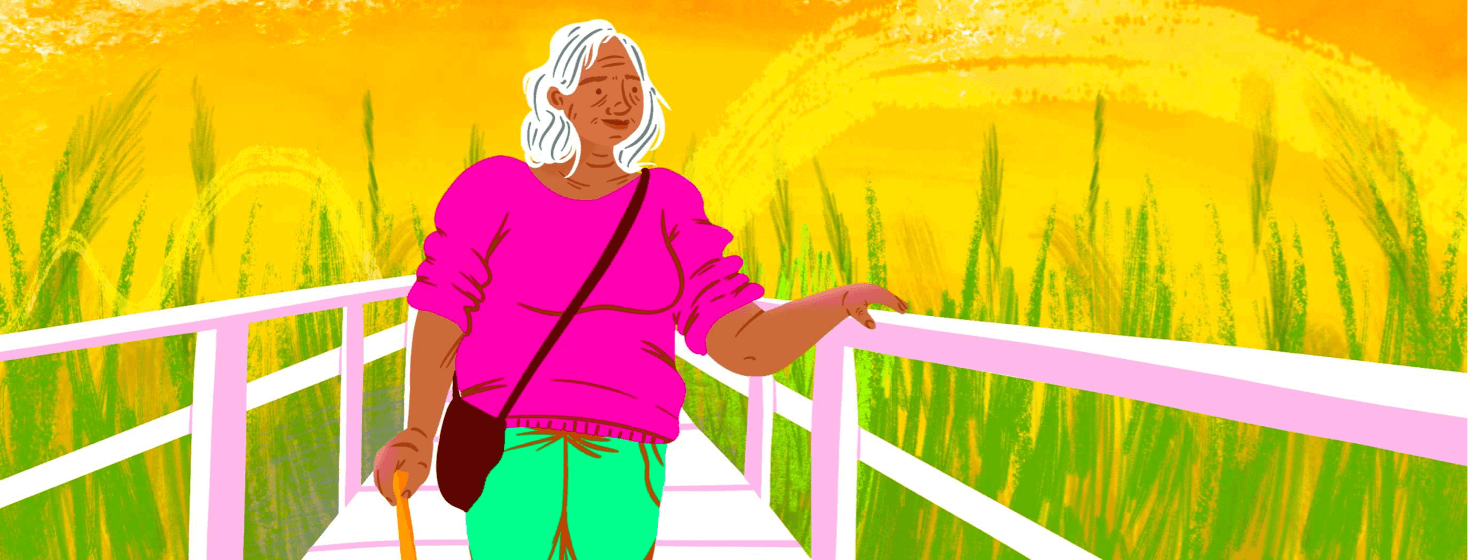Falling: Is It My Eyes or My Age?
We know that having reduced depth perception, impaired dark adaptation, or lower vision from macular degeneration contributes to the chance of falling. Add in the fact that as we age we aren’t able to recover our balance as quickly or easily when we do stumble.
Reduced vision, muscle strength, balance, depth perception, age, even foot health all can contribute to a fall. Increasing age or lowered fitness means we take longer to recover as well.
Stumbling over roots and acorns
I was out with my walking group recently when I stumbled and almost fell on a particularly rough and rooty trail. The helpful friend closest to me kept me from what might have been a devastating fall. That was the beginning of our conversation on falls. As we are all seniors, it becomes a definite possibility. Some of us, myself included, have begun using hiking poles to help with our balance.
Another time, one of our group missed seeing the acorns, stepped off the sidewalk, and was felled by those acorns. She is still recuperating from a broken pelvis! A visit with our primary care physician and a bone density test could be good starting points.
For those of us with macular degeneration, an occupational therapist specializing in low vision might be a good way to be proactive.
Walking in low light areas
One of our recent walks was through a historic area that began as part of the Hudson Bay Company, then was a fort, next, a wartime coastal defense area with gun emplacements, military ramparts, bunkers, and lookouts. It’s now a wonderful municipal park with glorious views. To get to the best lookout, we need to go through a curved, above-ground, concrete tunnel about 20 feet long. I’m sure there’s a name for it, but I haven’t been able to find it! The ground is uneven, with broken concrete exposing the aggregate. Dark adaptation means my eyes don’t adjust quickly to the changes in light, so after a few steps I was almost blind. Having been here before, I was prepared with my hiking pole. The view at the top is well worth it!
Using a white cane
We need to be more aware of our surroundings, of where the next footstep will fall. A white cane may help keep you from staring at the ground in front of you, freeing you to glance up at the world or look out for other hazards such as low-hanging branches. Uneven sidewalks are a definite danger, as are the small branches down after a heavy wind.
Noticing the floors
One reported cause for the recent increase in falls, not just among the visually impaired or elderly, is the switch to those highly polished wood floors instead of carpet. The texture transition from the floor to even a solidly anchored area rug can be an additional hazard.

Join the conversation